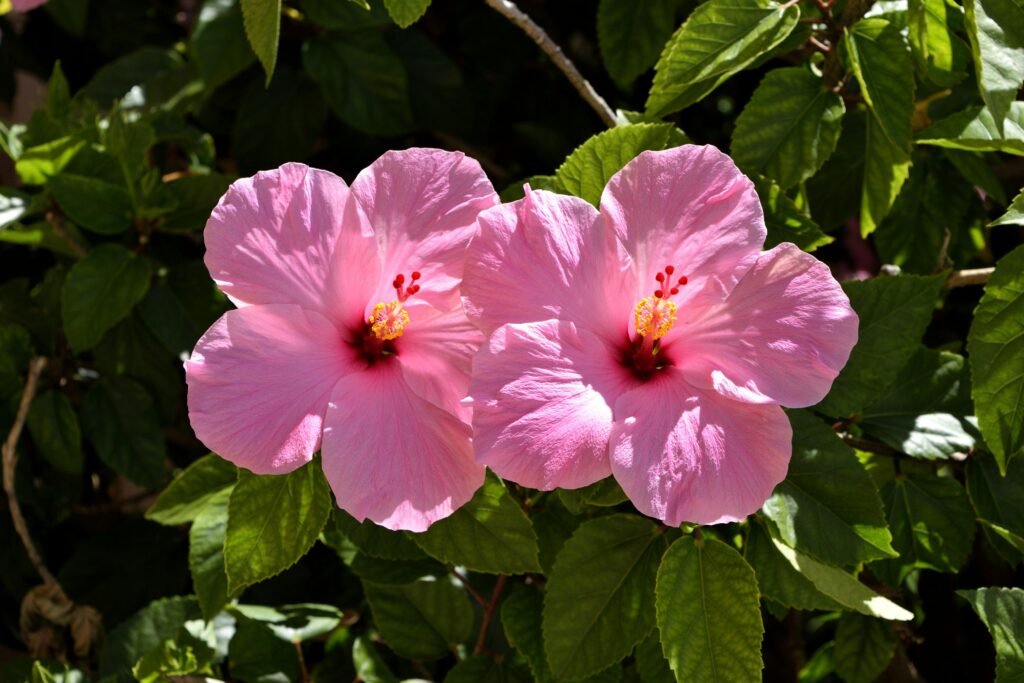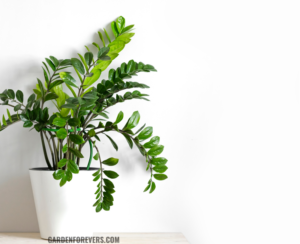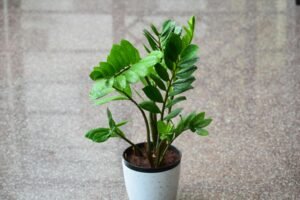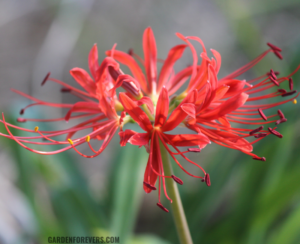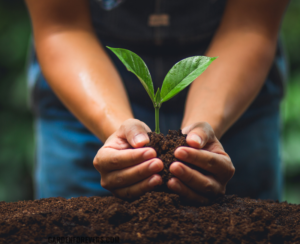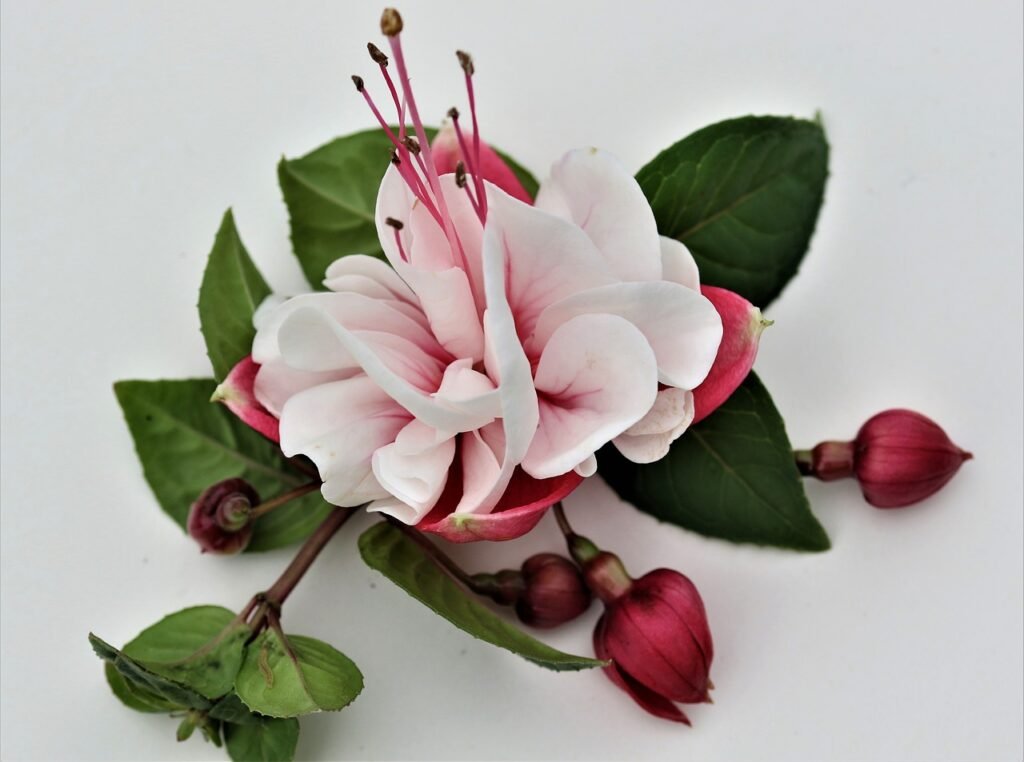How to Care for and Grow Hibiscus Plant

Hibiscus plant is a shrub-like plant belonging to the Malvaceae family. There are hundreds of species of hibiscus plants, each with its unique characteristics. Hibiscus plants are flowering and herbaceous. These plants are usually 8-16 feet tall and 5-10 feet wide. The leaves are dark green with slightly serrated edges. Each hibiscus flower blooms individually. Each flower has 4-5 petals and is 4-18 cm wide. In most cases, the flowers fall off after a day. Notable hibiscus varieties include Jaba, Rakta Jaba, Jhumko Jaba, Jaba Kusum, etc. The flowers can be white, red, pink, purple, and deep purple. Many hybrid varieties are also available, exhibiting a range of colors. Also Learn More About Flowers other than hibiscus.
This hibiscus plant will enhance the beauty of your garden, making it unparalleled. Due to its beautiful colours and healthy growth, this type of plant is extremely popular among gardeners. The plant also has many medicinal properties. It has been used for various medicinal purposes since ancient times.
About Hibiscus Plant
Common Name | |
Botanical Name | Hibiscus spp |
Plant Type | Annual, perennial, shrub, flowering plant |
Bloom Time | Late Summer, Fall |
Plant Size | 8-16 ft |
Sun Exposure | Daily 4-6 hours, Partial shade |
Soil Type | Well- Drained, Moist |
Soil pH | Acidic, Neutral |
Hardiness Zone | 4-11 USDA |
Native Area | Asia, North America |
When to Plant Hibiscus
With good care, hibiscus Flowers can be planted in any season. But the rainy season can be suitable for you if you want to make seedlings from cuttings. And if you want to plant from seeds, then choose the spring.
How to Take Care of Hibiscus Plant
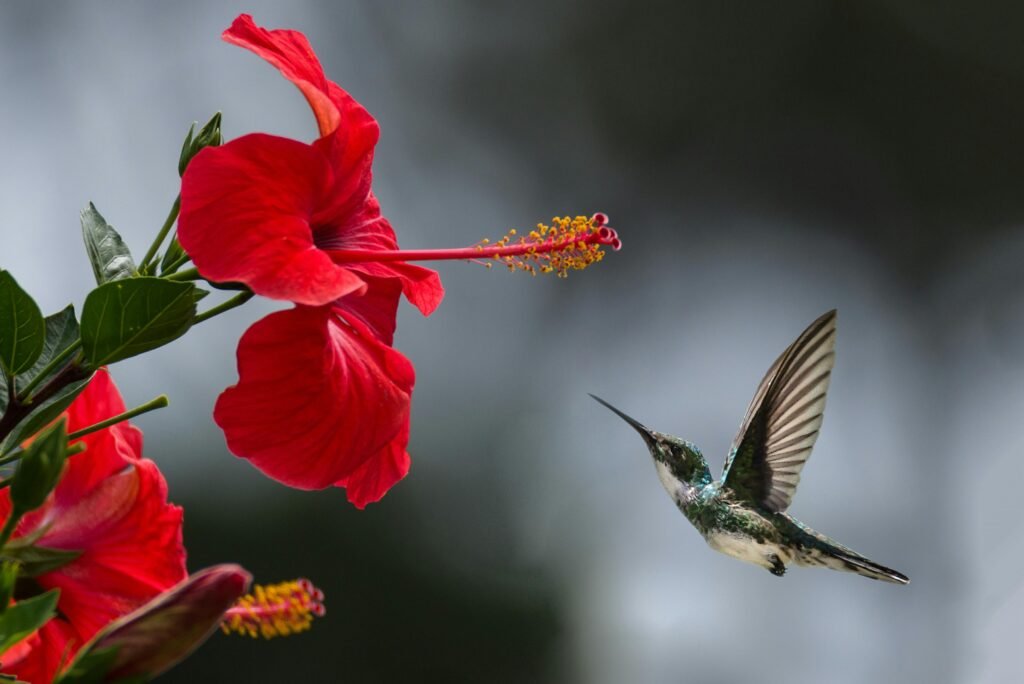
You need to understand the type of hibiscus and take care of it. Do you know if it’s hot or cold? And determine the care of hibiscus depending on where you plant it, outside the house or on the roof, on the ground or in the pot.
Light
Hibiscus has lived for more than 40 years. Choose a suitable place to plant this tree. Hibiscus likes bright light. However, direct sunlight can be harmful. Plant the plant in such a place that it gets 4-6 hours of sunlight during the day. Adapt the plant slowly in the place of direct sun, there will be no problem in the growth of the plant.
Soil
All species of hibiscus prefer well-drained, moist and fertile soil. Its hardy variety likes waterlogged land and other varieties are good in wet soil. The soil must be acidic. So if the pH of your garden soil is above 6.5, increase the acidity of the soil.
Water
Hibiscus likes water. If the soil is well-drained, the plant grows well. Water your plants before the soil dries up. Mulching can be done in the application, to avoid dryness. Excessive drying of the soil damages the leaves and flowers. Add water to your pot when the soil dries out. Add water as often as needed to keep it moist. It is best to drink a little water twice a day.
Avoid drinking too much water in winter.
Temperature and humidity
You can get maximum flowers from hibiscus plants if you keep it at the desired temperature. Keep this plant in such a place that the temperature is always between 15-35 degrees Celsius. The plant does not grow well in hot weather. All its varieties grow well in high humidity.
Fertilizer
Fix the month of March to October for fertilizing the hibiscus plant. Agricultural scientists advise to use of organic fertilizers in the treatment of hibiscus.
This fertilizer helps the plants to grow a lot of leaves and beautiful flowers. Hibiscus plants need certain nutrients, such as nitrogen, phosphorus, and potassium, to stay healthy. Fertilizers with the right balance of these nutrients, such as a 7-6-5 ratio, are best for hibiscus. But regular flower fertilizer can also work for other plants nearby. Make sure that the plants are getting important things like sulphur, boron, copper, iron, manganese, molybdenum and zinc.
Pruning
To continue the good growth of hibiscus, its stalks are pruned by the herd. At least once a year, and if 2 years pass without pruning, your plant may be damaged. After winters take turns in pruning dead and diseased stems so that new shoots come in the beginning of spring. Cut up to 3 mm on the node.
You will often see that your hibiscus plant is not flowering much, then cut the branches by keeping two to three buds in them, and see for yourself that the plant will bloom.
However, try to keep the tools disinfected while cutting. It will not spread any germs or bacteria. After pruning, apply fungicide on the stem.
Propagate hibiscus
Many hibiscus are propagated from cuttings of their stems. It is also grown from seeds. How to plant depends on the variety of hibiscus. There are some hybrid hibiscus varieties that you need to take different steps to plant.
How to make a seedling from seeds
Seeding from seeds is facilitated only by swamp hibiscus and roselle hibiscus species. It is challenging to cultivate from seeds of other varieties or hybrids. The quality of the seed must be good. At the same time, many factors including weather, soil, environment, humidity, kit or insect have to be brought under the purview of the description.
You can soak the seeds for 8 hours at room temperature. It accelerates the growth. Avoid overwintering for seeding.
Choose a tray or container with a slit at the bottom. Prepare a suitable mixture for planting seeds in the pot. Sow seeds from the top of 1 part of the 4 parts of the pot. Soak the soil with water, but do not let the water stagnate. Place the container in a sunny place. The temperature should be between 23-29 degrees Celsius. Wait for the plants to germinate and in the condition of the young shoots keep them in the sun slowly and make the plants adaptable.
How to make hibiscus from seeds
Seeding from seeds is facilitated only by swamp hibiscus and roselle hibiscus species. It is challenging to cultivate from seeds of other varieties or hybrids. The quality of the seed must be good. At the same time, many factors including weather, soil, environment, humidity, kit or insect have to be brought under the purview of the description. You can soak the seeds for 8 hours at room temperature. It accelerates the growth. Avoid overwintering for seeding.
Choose a tray or container with a slit at the bottom. Prepare a suitable mixture for planting seeds in the pot. Sow seeds from the top of 1 part of the 4 parts of the pot. Soak the soil with water, but do not let the water stagnate. Place the container in a sunny place. The temperature should be between 23-29 degrees Celsius. Wait for the plants to germinate and in the condition of the young shoots keep them in the sun slowly and make the plants adaptable.
Potting and Repotting
For potting you choose a pot that will be wide, but a little less deep. If the pot is too deep, they waste more energy on root growth than on flowering.
Keep a good drainage system in the container. Prepare the soil according to the preferences of the hibiscus. Avoid placing the seedlings in direct sunlight. Adapt slowly to the sun so that the stems of the plant become strong. Then, of course, provide regular water and food. Avoid excessive heat during cooking.
Repot your hibiscus every two years. Increase the size of the container and change the media. Add some soil to the mixture. Plant the tree and water it. After replanting some leaves will fall, that is normal, but after a few days, it will be fine. Leave the pot with the plant in full shade for a few days, then keep it in low sun. You can leave it in the sun for 4-6 hours.
Over-wintering
First of all, we need to find out what kind of hibiscus you have. If it’s a tropical hibiscus, you should bring it inside in the winter. Place it in a sunny window and take care of it like a regular indoor plant. If you do, you’ll see the flowers in winter too! If you don’t have a lot of space inside, you can put the plant in a cool room with a bright window and give it enough water to keep it alive, but it won’t grow too much. This can be a little difficult for plants, but it’s a good option if you don’t have a lot of space indoors.
Rose-of-Charon is a plant that blooms late in the year and can survive in certain areas. It needs to be properly cared for to survive the winter. You can keep your hardy hibiscus species (Hibiscus coccineus or Hibiscus moscheutos) outdoors in the extreme winter. Studies have shown that they can boost your immune system.
Cut the stems 6 or 12 inches above the ground in late winter. In winter, the plant can go dormant, the leaves will fall off. Wait for the spring to fill with leaves and flowers.
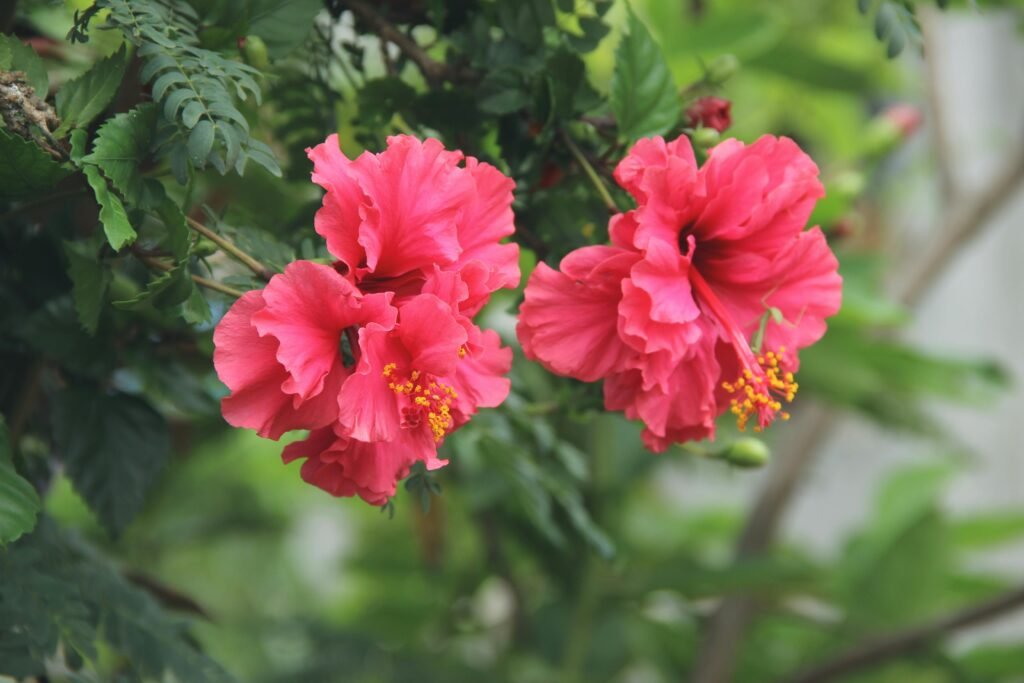
Common Pests & Plant Diseases
Problem: Hibiscus is often affected by pests. But it’s not hard to get rid of them. Hibiscus is most commonly affected by millibars. These insects live singly or in pairs. A kind of juice is secreted from them which attracts the flocks of pipalika. If proper care is not taken, the whole plant will die.
Solution: It’s best to crush them or throw them in a place away from your garden. Imidachloroprid 1 m. / L. It can be mixed with water.
Problem: The spider mite attacks the young leaves of the hibiscus plant. They eat the seeds and then drop the leaves. The problem is that this insect is not visible to the naked eye. It can be diagnosed by watching your tree shed more leaves. Again, the spread of their network can also be understood. This usually happens in the heat.
Solution: The first step is to remove the affected area. In this case, you can wash the affected area with warm water or spray hot water.
Problem: Another pest attack is the jab pest attack. This insect eats the roots and young leaves of the plant. As a result, the skin turns yellow. Trees become dull and small. The sweet liquid from the body of the insect attracts the fungus.
Solution: If the insect is small, it can be killed by crushing it with hands. You can mix it with soap or water. Again, spraying a solution of neem and water will give good results. If the attack is more than 7 ml of imicloprid can be sprayed 2-3 times at an interval of 10 days by mixing in 10 liters of water.
Types of Hibiscus
There are many varieties of hibiscus. Many horticulturists say that its number will be around 220 in the whole world. You can light up your garden by planting different varieties of hibiscus. Here are some varieties of hibiscus:

Hibiscus rosa-sinensis
- Among the hibiscus, it is the common and familiar variety.
- It is also known as China Rose.
- Evergreen shrub
- 8-16 feet long and 5-10 feet wide.
- Its stem is gaseous, erect, green, tubular and branched and the leaves are simple.
- Blooms in summer and fall. Flowers have a red, white and pink colour.
- Does not tolerate temperatures below 10 ° C (50 ° F)
- In tropical and subtropical regions, it is used as a garden ornamental.
Hibiscus syriacus
- Although a rose is associated with the name, it is not a variety of roses. Rather a species of hibiscus.
- Its white, pink, lavender, and purple colour with a red base attracts garden lovers.
- It also has a double petal.
- native to East Asia
- It is 8-12 feet long and 6-10 feet wide.
- Must be planted in spring or autumn
- The flowers have five petals and are of different colours.
Hibiscus Moscheutos
- Deciduous shrubs and herbaceous perennials.
- This species of hibiscus is a popular winter garden plant.
- The flowers are white, pink and lilac.
- Its height is 4.9-8.2 feet.
- He likes water.
- The pages are simple.
- The flower is radially symmetrical and has five petals.
- It grows well in sunlight and does not bloom in the shade.
Hibiscus mutabilis
- Herbaceous, perennial
- It is 12-15 cm long.
- If you prefer full sunlight, you can go for partial shade.
- Native to China and found on all continents except Antarctica
- Hibiscus tiliaceus (Maho or Cottonwood)
- This species is marine and coastal. Commonly known as cottonwoods.
- Evergreen, Perennial Shrub, Waterwise
- Reaches a height of 4-10 m (13-33 ft).
- The pages are 15.m. It is long and can be eaten as a vegetable.
- The flowers have five petals.
Hibiscus sabdariffa
- Roselle is an annual or perennial herb, a woody shrub at the base.
- It is 2-2.5 m long.
- The inflorescence has 3-5 lobes, and the flowers are 8-10 cm.
- Seeds, leaves and seeds can be used to treat constipation.
Hibiscus acetosella
- Perennial shrub
- This species reaches a height of 3.0-5.6 feet.
- The flowers of this variety are long-lasting and large.
- It can be eaten as a vegetable, which is light sour.
How to get Hibiscus Plant to Bloom
Hibiscus plant blossoms in different varieties. Blooms usually occur in late summer to early fall. That is, if you have a hibiscus tree in your garden, you can get flowers from June to November.
The duration of hibiscus is usually one day. Some varieties of hybrids have been bred, the flowering of which lasts three days. Hibiscus flowers for about 6 months.
What Do Hibiscus Flowers Look and Smell Like?
Hibiscus flowers have 5 petals. Available in a variety of colours such as white, red, pink, lavender-pink, maroon, brown, etc. Dark to light. They are of single-petal and double-petal. The petals are fused or free across species and are capable of pollination. Hibiscus flowers are much brighter. The flowers have no scent. Hibiscus grows well in organic fertilizers, moisture, and well-drained soil.
How to get more blooms
Hibiscus flowers bloom less often when they do not get enough sunlight or do not get fertilizer. Provide enough food for your plants. You can put rotten leaves, and rotten manure in vegetables. Dry after 3 months. Liquid fertilizer plays a leading role in the flowering of your plant.
Caring for Hibiscus After It Blooms
Cut off one-third of the plant after the first flowering. With this new shoots will come on the plant and in the second stage it will get beautiful and fast flowers.
Deadheading hibiscus flowers
Cut and discard dead flowers. Your plants will be healthy and beautiful. There will be flowers again.water. Again, there could be an insect. Find the problem and solve it.
The Dropping of Buds
A tree can suddenly fall on you. This could be due to the weather. It may be that water has accumulated at the base of your tree. This flower is very popular for increasing the density of hair.
FAQ
Is it better to plant hibiscus plants in plastic or earthen pots?
Plastic containers are good for applying hibiscus. In earthen pots there is no moisture in the soil of the media, water evaporates, due to which the soil dries quickly. Plastic is good in this case.
Is hibiscus good use for the hair?
The flowers and leaves of hibiscus have long been used in hair care. It improves hair follicles, increases blood circulation to the scalp and retains hair gel.
Where’s the hibiscus?
Hibiscus doesn’t like high temperatures. The flowers do not bloom in hot weather. I like acidic

